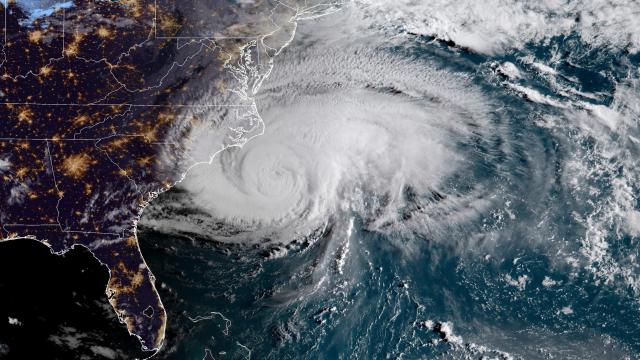The American Meteorological Society (AMS) will host the largest annual gathering of the world’s largest weather nerds this weekend. But a key group of constituents will be notably absent.
The shutdown over Trump’s border wall means federal scientists have had to cancel their trips to this year’s confab in Phoenix, and their absence could have reverberations long after the federal government reopens for business.
On Wednesday, an email went out to employees at the National Oceanic and Atmospheric Administration (NOAA) — the agency that the National Weather Service (NWS) is a part of — that “all official NOAA travel to the AMS is canceled.” People at other federal agencies with a stake in weather and climate may also have to cancel their travel as well. In the scheme of things, weather forecasters and scientists missing a conference may seem like small potatoes, but in reality this could cause lasting damage to the weather community.
“While I don’t want to diminish the importance of other conferences throughout the year, the annual AMS meeting is an extremely significant week for the weather enterprise,” Becky DePodwin, the co-chair for the Early Career Professionals Conference at AMS, told Earther. “It’s where connections are made, ideas are sparked, projects initiate, and students and early career professionals have the opportunity to connect with potential employers.”
Indeed, few other conferences draw together such a wide cross section of scientists and sectors. We’re talking meteorologists, climate scientists, atmospheric researchers, social scientists, satellite geeks, radar nerds, and a host of other experts from the federal, university, private, and broadcast worlds. All of those worlds are built on top of federal data and research. You don’t have a weather app on your phone without NOAA collecting data, NASA launching satellites, or federal investments in modelling. Ditto for evacuation orders during a hurricane.
Removing the federal scientists working on those areas, removes the bedrock from the meeting in addition to throwing sessions into disarray. An estimated 500-700 federal employees could be forced to bail on the conference that normally attracts roughly 4,000 attendees, potentially causing the rest of the enterprise to begin to wobble.
“The AMS meeting is a critical forum for science, policy development, collaboration and professional development,” Marshall Shepherd, a University of Georgia atmospheric scientist and former AMS president, told Earther. “It will be a complete shell of what it could be, but the enterprise will get through it.”
If you’re attending #AMS2019 & would like to help in case the #GovernmentShutdown prevents some from attending, we have created a form where you can volunteer to chair a session, be a presenter, etc. Thank you in advance to anyone who is able to help! https://t.co/fbebhZSzmv pic.twitter.com/lIXKYmvLaQ
— AMS (@ametsoc) January 3, 2019
Beyond the exchange of ideas between scientists, early career professionals and students could see their professional growth stunted. AMS kicks off with a student conference on Saturday. Gaige Kerr, a graduate student at Johns Hopkins who has helped organised the student conference, told Earther about 800 students usually attend the event and largely fund their own trips. A big draw for many students is the chance to present their work to their peers as well as more established attendees and get career advice.
“It’s a fact that a decent portion of today’s meteorologists and atmospheric scientists could end up working for the federal government, and it’s frustrating that federal employees can’t be with students to share their perspectives about their lines of work,” Kerr said. “We initially had hoped that government employees could present and field questions via Skype or some other remote presentation software, but for NWS employees, this isn’t allowed as well.”
There’s no crystal ball to show how a week of missed connections will play out. It’s possible that lifesaving advances in forecasts could be delayed, a novel use of data never comes to fruition, or that the future head of the NWS takes a job elsewhere. These impacts of the shutdown are much harder to quantify than Yosemite’s overflowing toilets and trash cans, but the ramifications are potentially far greater.
“I believe the repercussions of losing the entire public sector of meteorologists at the AMS will last for years,” an NWS employee who asked to remain anonymous so they could speak freely told Earther. “Critical engagements happen there that cannot be replaced. Seeds of collaboration are fertilised and planted. Partnerships are created and nurtured. We lose the year’s worth of those connections, but then we’re playing catch-up in the next year and maybe the one after that. We’re left out of the loop, on the outside looking in.”
